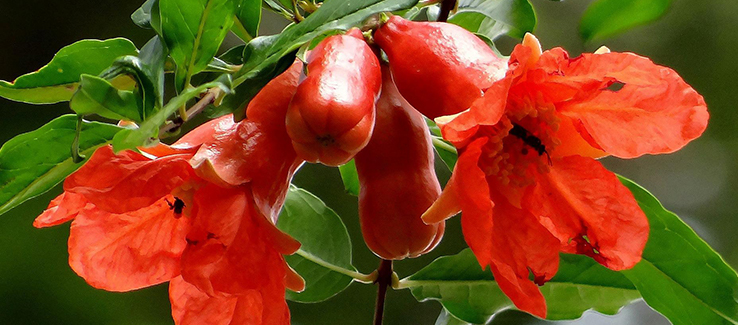5 Exotic Fruit Trees for Zone 7 Landscapes
Avoid growing boring tree species in your zone 7 landscape. Knowing which exotic fruit trees to plant will provide you and your loved ones with years of conversation pieces and loads of incredible tasting fruit.
fasttreeremovalatlanta.com gathered the following species, planting, and harvesting information about 5 exotic fruit trees for your zone 7 landscape.
1. Pomegranate (Punica granatum)
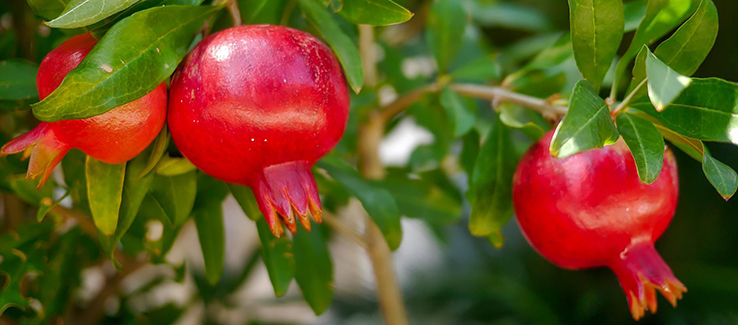
Pomegranate trees are branched and spiny with glossy, leathery, oval to oblong leaves. The tree produces bright red flowers singly at branch tips, followed by a rounded hexagonal fruit with a thick pink-red skin.
Sun – Pomegranates thrive in locations with at least 6 hours of direct daily sun.
Soil – Good drainage is vital for pomegranate trees, but they will tolerate almost any soil type, including poor or alkaline ones.
Water – Pomegranates require at least one inch of water a week. Watering this tree during drought season is mandatory.
Size at Maturity – Pomegranate trees can grow to a height of 12 to 20 feet with a spread of 12 to 20 feet.
Fruit – Fruit ripening takes around six to seven months for most pomegranates. Flowers blooming in April and May should be ready for harvest between late October and late November.
Potential Problems – Pomegranate fruit rot disease, known as “heart rot” or “black heart,” is a common disease found in pomegranate trees and is treated by keeping your tree healthy, watered, and free from infestations.
2. Fig (Ficus carica)
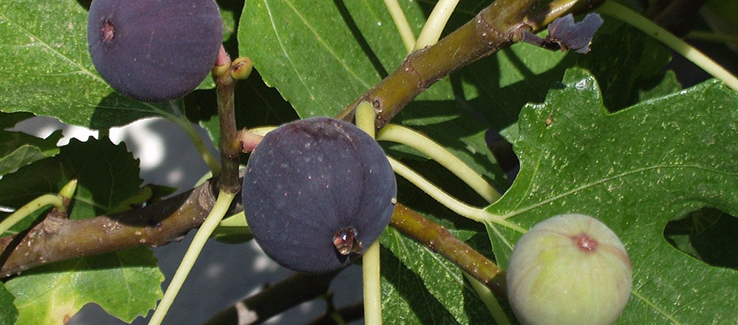
Ficus carica is a species of small tree in the Moraceae flowering plant family. Native to the Mediterranean and western Asia, this tree has been cultivated since ancient times and is currently grown throughout the world for its delicious fruit and as an ornamental or specimen tree.
Sun – This species will do best in locations with 7 to 8 hours of direct daily sun.
Soil – Fig trees grow best in well-drained, organically-rich soil types but will grow in many other soil types and are tolerant of heavy clay soils if the soil’s drainage is good.
Water – Fig trees require one to two inches of water per week.
Size at Maturity – Ficus Carica trees can grow to a height of 15 to 30 feet with a spread of 15 to 30 feet.
Fruit – Some trees will produce a “breba,” which are fig fruits developing during spring on the previous year’s growth, followed by the main fig crop developing on new shoot growth, and ripening in late summer or fall.
Potential Problems – Aphids, scale, nematodes, spider mites, and mealybugs can cause problems for this species. Robust growth and health will help keep most parasitic problems from doing any significant damage.
3. Kiwi (Actinidia deliciosa)
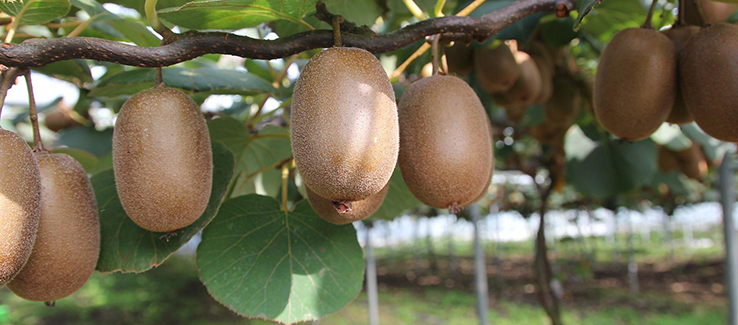
This species is a vigorous, deciduous climbing vine with stout shoots covered in red-brown hairs and ovate, heart-shaped, green leaves with a sweet, citrusy, brownish-green fruit approximately the size of a chicken’s egg.
Sun – Kiwis thrive in full sun provided their roots receive midday shade.
Soil – Plant kiwi vines in well-drained soil with a pH between 5.0 and 6.5.
Water – Generally, two irrigations (1 inch) per week are adequate and provide proper moisture. Avoid over-watering kiwi vines.
Size at Maturity – Each vine can grow to 40 feet tall.
Fruit – Kiwi vines take a few years to fully mature and produce fruit. It could be one to three years before fruiting, and crop yields will increase after the first year.
Potential Problems – Leaves and flowers can be severely damaged by spring frosts, and frost on flowers can mean no fruit that season.
4. Passion Fruit (Passiflora edulis)
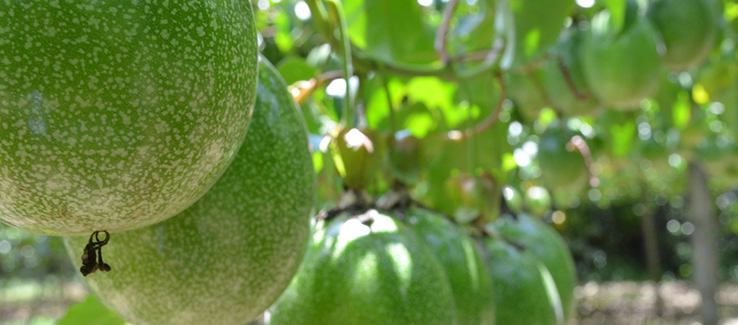
Passion fruit is an evergreen, flowering vine from Brazil that climbs by tendrils. Its height and spread will vary depending on the structure it climbs on. The flower is a lovely purple and white, reaching a width of 3 to 5 inches. Each unique flower lasts one day, blooming in the summer and early fall.
Sun – This species will do best in locations with 4 to 5 hours of direct daily sun.
Soil – These vines will grow in multiple soil types, but light to heavy sandy loams with a pH of 6.5 to 7.5 is most suitable.
Water – Two irrigations (1 to two inches) per week are adequate and provide proper moisture. This species is not drought tolerant.
Size at Maturity – This species’ height and spread will vary depending on the structure it climbs on.
Fruit – Passionfruit vines can take between 5 and 18 months to fruit, depending on variety and conditions. However, they will typically develop fruit within a year.
Potential Problems – Nematodes can pose a severe problem, and caterpillars may slow growth by eating foliage.
5. PawPaw (Asimina triloba)
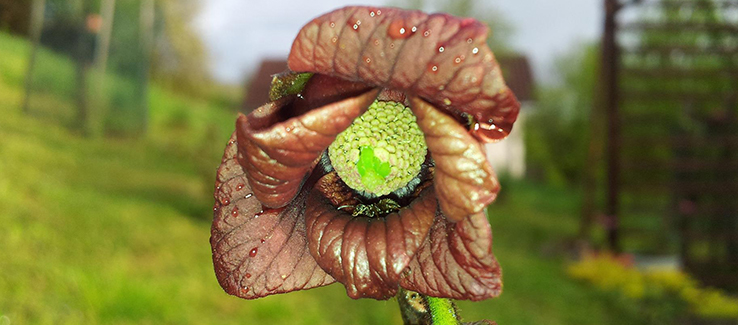
The American papaw, among many regional names, is a small deciduous tree native to the eastern United States and Canada, producing a large, yellowish-green to brown fruit.
Sun – This species will do best in locations with 7 to 8 hours of direct daily sun.
Soil – Pawpaws will grow best in slightly acidic soil with a pH between 5.5 and 7.0. The species thrives in deep, fertile, and well-drained soil types.
Water – This species requires one to two inches of water per week.
Size at Maturity – Pawpaw trees can grow to a height of 15 to 40 feet with a spread of 15 to 20 feet.
Fruit – Pawpaws typically start bearing fruit in their sixth or seventh year and will do so at the end of summer and beginning of fall.
Potential Problems – Pawpaw trees are remarkably disease resistant, and healthy trees are known to stand their ground against the severest of fungi.
Zone 7 Exotic Fruit Trees
In this article, you discovered 5 exotic fruit tree species and their general planting and care information for properties in USDA Hardiness Zone 7.
By planting exotic fruit species on your property, you are contributing to environmental diversity and giving yourself an uncommon treat during harvest time.
Ignoring the potential to diversify your landscape by planting exotic fruit trees will leave you at the will of erratic supply chains and questionable growing/harvesting practices.
Sources:
catalog.extension.oregonstate.edu/em9322/html
hort.purdue.edu/newcrop/morton/pomegranate.html
utianews.tennessee.edu/common-fig-ficus-carica/
edis.ifas.ufl.edu/publication/FP456
dendro.cnre.vt.edu/dendrology/syllabus/factsheet.cfm?ID=155
(404) 220-9965
(404) 220-9963

